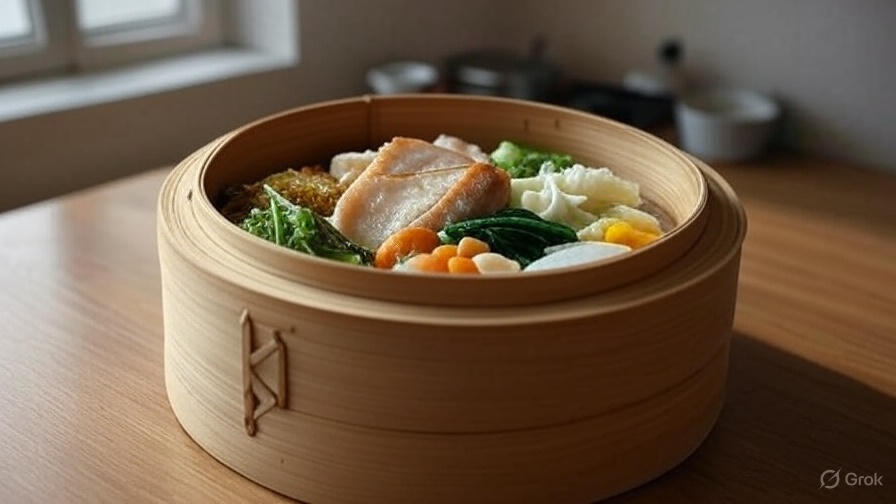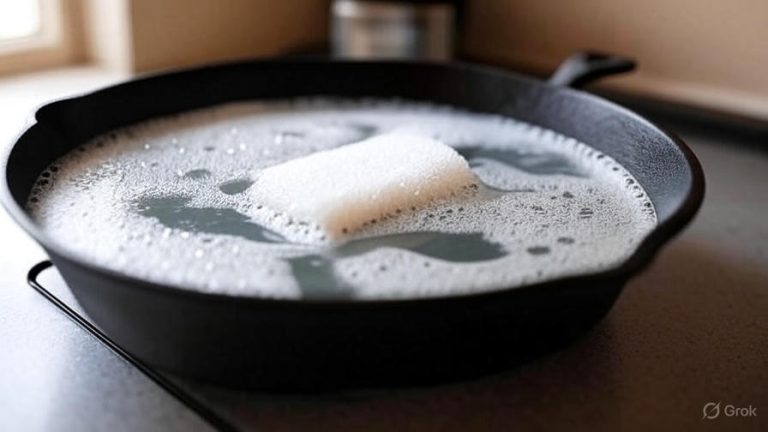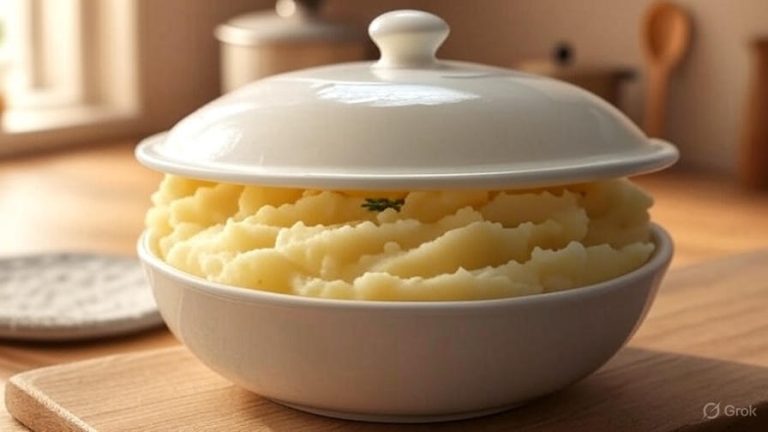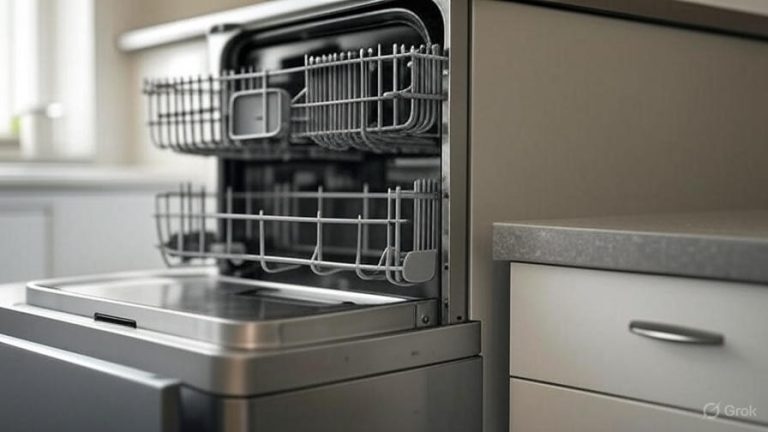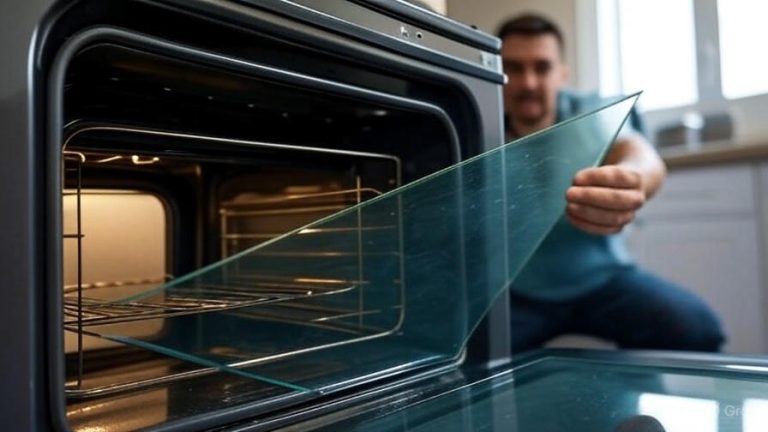How to Use a Bamboo Steamer?
Bamboo steamers have transformed kitchens worldwide, bringing ancient Chinese cooking wisdom into modern homes. These elegant wooden vessels create perfectly steamed vegetables, dumplings, fish, and rice while preserving nutrients and natural flavors. Learning to use a bamboo steamer opens doors to healthier cooking methods and authentic Asian cuisine.
What Makes Bamboo Steamers Special
Traditional bamboo steamers consist of woven bamboo strips that form circular tiers. The natural bamboo material allows steam to circulate freely while absorbing excess moisture. This prevents water droplets from falling back onto your food, which often happens with metal steamers.
Chinese families have relied on these steamers for centuries to prepare daily meals. The bamboo construction regulates temperature naturally, creating gentle, even heat distribution. This process preserves vitamins, minerals, and the natural texture of ingredients.
Modern cooks appreciate how bamboo steamers eliminate the need for oils or fats. You can prepare entire meals using only steam heat, making this cooking method ideal for health-conscious individuals and those following specific dietary plans.
Essential Components of Your Bamboo Steamer
A complete bamboo steamer set includes multiple stackable baskets and a fitted lid. Most sets come with two or three tiers, allowing you to cook different foods simultaneously. The bottom basket typically measures 6, 8, 10, or 12 inches in diameter.
Each basket features a slatted bamboo bottom that allows steam to rise through layers. The sides consist of tightly woven bamboo strips that maintain structural integrity while permitting gentle air circulation. A domed bamboo lid tops the entire assembly, creating the sealed environment necessary for proper steaming.
Quality bamboo steamers use food-grade bamboo that resists warping and cracking. The joints should fit snugly together without gaps that would allow steam to escape. Well-constructed steamers last for years with proper care and maintenance.
Preparing Your Bamboo Steamer for First Use
Before cooking with your new bamboo steamer, you need to season it properly. Start by rinsing each piece under cool running water to remove any bamboo dust or debris from manufacturing. Avoid using soap, as bamboo absorbs odors and flavors easily.
Soak the entire steamer in clean water for 30 minutes. This initial soaking prevents the bamboo from burning when exposed to heat and helps the fibers expand to create better seals between pieces.
After soaking, steam the empty baskets for 20 minutes. This process removes any residual bamboo taste and prepares the steamer for food use. Some people notice a mild woody aroma during the first few uses, which disappears as the bamboo becomes seasoned.
Setting Up Your Steaming Station
You’ll need a wok, large skillet, or wide saucepan that accommodates your steamer’s diameter. The steamer should sit comfortably inside the pan without touching the sides. If your steamer is too large for your cookware, it won’t steam properly.
Fill your pan with approximately 1-2 inches of water. The water level should remain below the bottom of your steamer basket to prevent direct contact. Too much water will bubble up through the slats, while too little water will evaporate quickly and potentially damage your cookware.
Place your empty steamer in the pan and bring the water to a rolling boil. Once steam begins rising through the baskets, you’re ready to add your ingredients. The water should maintain a steady simmer throughout the cooking process.
Arranging Food in Your Bamboo Steamer
Line each basket with parchment paper, cabbage leaves, or cheesecloth to prevent food from sticking to the bamboo slats. These linings also make cleanup easier and prevent small pieces from falling through the gaps.
Place delicate items like fish fillets and vegetables in the upper tiers, where they receive gentler heat. Heartier ingredients such as root vegetables and proteins go in the lower baskets closer to the steam source.
Leave space between pieces to ensure proper steam circulation. Overcrowding prevents even cooking and can result in some pieces being overcooked while others remain underdone. Arrange items in a single layer whenever possible.
Mastering Steaming Times and Techniques
Different ingredients require varying steaming times to reach optimal texture and doneness. Leafy greens typically need only 3-5 minutes, while broccoli and cauliflower require 8-10 minutes. Root vegetables like carrots and potatoes may need 15-20 minutes depending on their size.
Fish fillets steam in 8-12 minutes, depending on thickness. Chicken breast pieces need 15-20 minutes, while whole small fish may require 20-25 minutes. Always check for doneness by inserting a fork or knife into the thickest part of proteins.
Dumplings and buns need 12-15 minutes of steaming time. Frozen dumplings require an additional 3-5 minutes. Rice dishes typically steam for 20-30 minutes, depending on the type of rice and desired texture.
Steaming Vegetables to Perfection
Vegetables retain their vibrant colors, crisp textures, and nutritional value when steamed properly. Cut vegetables into uniform pieces to ensure even cooking. Harder vegetables like carrots and potatoes should be cut smaller than softer ones like zucchini and bell peppers.
Start with the longest-cooking vegetables in the bottom tier. Add quicker-cooking items to upper levels or introduce them partway through the cooking process. This method ensures everything finishes at the same time.
Asparagus spears steam beautifully in 6-8 minutes, while green beans need 8-10 minutes. Snow peas and sugar snap peas require only 3-4 minutes to maintain their crunch. Brussels sprouts, cut in half, steam perfectly in 10-12 minutes.
Creating Perfect Steamed Proteins
Fish and seafood shine when prepared in bamboo steamers. The gentle heat preserves delicate textures and natural flavors. Season fish with ginger, scallions, and soy sauce before steaming for authentic Asian flavors.
Chicken breasts benefit from being pounded to even thickness before steaming. This ensures uniform cooking and prevents dry, overcooked edges. Marinate chicken in rice wine, soy sauce, and aromatics for enhanced flavor.
Shellfish like shrimp and scallops cook quickly in steam heat. Large shrimp need only 4-6 minutes, while scallops require 3-5 minutes. These proteins continue cooking slightly after removal, so err on the side of undercooking.
Preparing Authentic Dumplings and Dim Sum
Bamboo steamers excel at cooking traditional Chinese dumplings and dim sum. These delicate items require gentle, moist heat that bamboo provides naturally. Store-bought or homemade dumplings both work well with this method.
Place dumplings on parchment paper or cabbage leaves, leaving space between each piece. Frozen dumplings can go directly into the steamer without thawing. Fresh dumplings need careful handling to prevent breaking.
Soup dumplings (xiaolongbao) require special attention. These delicate parcels contain hot broth that can burst if handled roughly. Steam them for 12-15 minutes and let them rest for 2-3 minutes before serving.
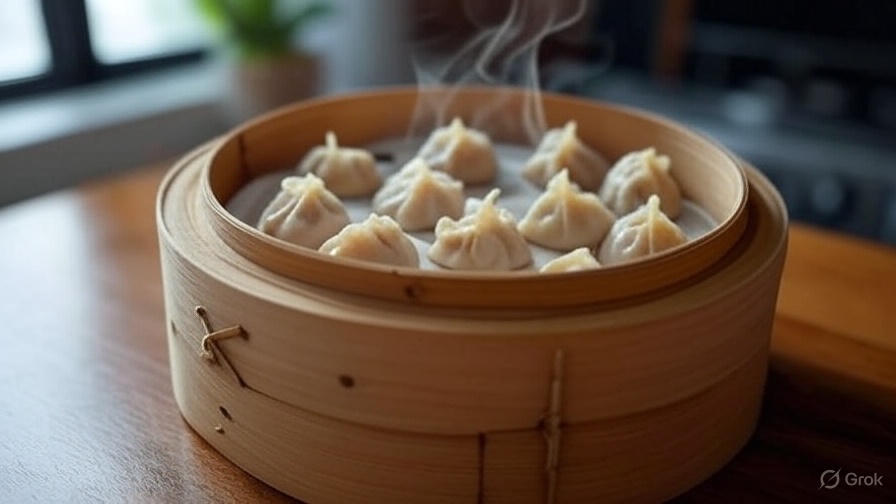
Rice and Grain Steaming Techniques
Steaming rice in bamboo creates fluffy, separate grains with excellent texture. Rinse rice thoroughly before steaming to remove excess starch. Use a ratio of 1:1.5 (rice to water) for most varieties.
Place rice in a heatproof bowl that fits inside your steamer basket. Add the appropriate amount of water and seasonings. Cover the bowl with foil to prevent water droplets from falling into the rice.
Sticky rice requires soaking for several hours before steaming. Drain the soaked rice and place it directly on cheesecloth-lined steamer baskets. Steam for 25-30 minutes, stirring once halfway through.
Maintaining Proper Steam Levels
Monitor your water level throughout the cooking process. Add hot water as needed to maintain consistent steam production. Cold water will temporarily lower the temperature and extend cooking times.
The water should maintain a gentle boil that produces steady steam without violent bubbling. Excessive heat can cause water to splash up into the food, while insufficient heat won’t generate enough steam for proper cooking.
Listen for changes in the steaming sounds. A steady, gentle hissing indicates proper steam levels. If the sounds become irregular or stop, check your water level immediately.
Troubleshooting Common Steaming Issues
If food cooks unevenly, check that steam can circulate freely around all pieces. Overcrowding is the most common cause of uneven cooking. Rearrange items with more space between pieces.
Dry or tough results often indicate insufficient steam or overcooking. Verify that your water level is adequate and reduce cooking times for delicate items. Some ingredients benefit from being removed early and allowed to finish cooking with residual heat.
Food that tastes bland may need more seasoning or aromatics. Add ginger slices, garlic, or herbs to the steaming water for subtle flavor enhancement. Marinating proteins before steaming also improves taste.
Cleaning and Storing Your Bamboo Steamer
Clean your bamboo steamer immediately after use to prevent food particles from hardening on the surfaces. Rinse with hot water and use a soft brush to remove stubborn bits. Avoid dish soap, which bamboo can absorb and transfer to future meals.
Air dry all pieces completely before storing to prevent mold and mildew growth. Place the steamer in a well-ventilated area away from direct sunlight. Proper drying typically takes 2-4 hours depending on humidity levels.
Store your clean, dry steamer in a cool, dry place with good air circulation. Avoid plastic bags or airtight containers that can trap moisture. A kitchen cabinet or pantry shelf works well for long-term storage.
Advanced Steaming Techniques
Experienced cooks use multiple steamer tiers to create complete meals simultaneously. Place proteins in the bottom tier, vegetables in the middle, and delicate items like fish or dumplings on top. This arrangement maximizes efficiency and flavor development.
Infuse additional flavors by adding aromatics to the steaming water. Ginger slices, lemongrass stalks, or star anise create subtle background flavors that complement Asian dishes. Wine or broth can replace some of the water for enhanced taste.
Create flavor barriers by wrapping ingredients in lettuce leaves, banana leaves, or parchment paper. These wrappings steam with the food while keeping different flavors separate and preventing mixing.
Health Benefits of Bamboo Steaming
Steaming preserves more vitamins and minerals than boiling, frying, or roasting. Water-soluble vitamins like vitamin C and B vitamins remain in the food rather than leaching into cooking liquid. This retention makes steamed foods more nutritious.
The fat-free cooking method supports weight management and heart health goals. You can prepare flavorful meals without adding oils, butter, or other fats. Natural food flavors shine through without heavy seasonings or sauces.
Gentle steaming maintains food textures that aid digestion. Vegetables retain beneficial fiber while becoming tender enough for easy chewing and processing. This cooking method suits people with digestive sensitivities.
Building Your Bamboo Steamer Skills
Start with simple vegetables and proteins before attempting complex dishes. Master basic steaming times and techniques with familiar ingredients. Gradually experiment with different combinations and flavors as your confidence grows.
Keep detailed notes about cooking times and results for different foods. These records help you develop consistent results and adapt recipes to your preferences. Every steamer and stove combination behaves slightly differently.
Practice coordinating multiple tiers to create complete meals. This skill takes time to develop but dramatically improves your efficiency in the kitchen. Plan your timing so all components finish simultaneously.
Conclusion
Bamboo steamers offer an authentic, healthy, and versatile cooking method that enhances any kitchen. These traditional tools require minimal setup while delivering maximum flavor and nutrition. With proper techniques and care, your bamboo steamer will provide years of excellent cooking results.
The gentle steaming process preserves natural flavors and textures while eliminating the need for added fats. From simple vegetables to elaborate dim sum presentations, bamboo steamers handle diverse ingredients with ease. Start with basic techniques and gradually expand your skills to create impressive steamed meals that rival restaurant quality.
Regular practice with your bamboo steamer develops intuition for timing and temperature control. Soon you’ll confidently prepare healthy, delicious meals that showcase the natural beauty and flavor of fresh ingredients. This ancient cooking method continues to prove its value in modern kitchens worldwide.

